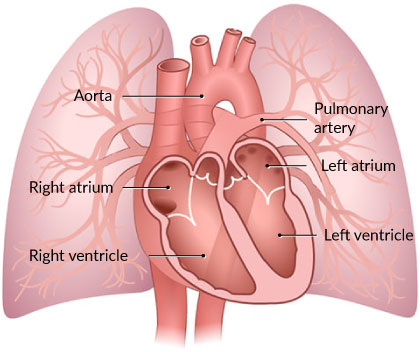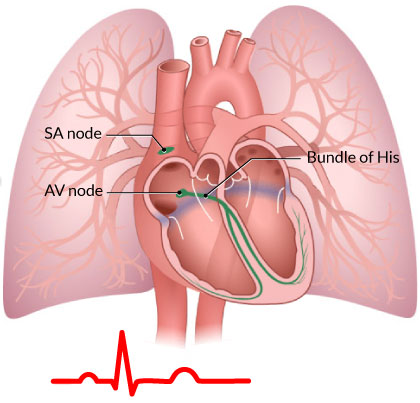The Heart and Blood Flow
The heart is responsible for circulating blood throughout the body. It is composed of 4 chambers – two top chambers (atria) and two bottom chambers (ventricles).
The atria are responsible for collecting blood, while the ventricles are responsible for pumping the blood to the lungs or the body. The heart is also divided into the right side and left side.

The right atrium collects deoxygenated blood returned from the body. It then empties into the right ventricle, which pumps the blood to the lungs, where it receives oxygen.
The oxygenated blood is then returned to the left atrium, and emptied into the left ventricle, which pumps the oxygenated blood to the body. While all the chambers in the heart are important, the main pumping chamber to circulate the blood to the body is the left ventricle.
There are 4 valves in the heart. On the right side, the tricuspid valve separates the right atrium from the right ventricle. The pulmonary valve separates the right ventricle from the pulmonary arteries (blood vessels in the lungs).
On the left side, the mitral valve separates the left atrium from the left ventricle. The aortic valve separates the left ventricle from the aorta.
Normally the valves allow for one-way blood flow. The valves may become leaky (called regurgitation) or narrowed (called stenosis). Problems with the valves may be related to a congenital problem (a problem you were born with) or an acquired condition.
The Electrical System of the Heart

The pumping of the heart is coordinated by specialized electrical tissue within the heart.
The signal to beat normally originates in the sinoatrial (SA) node, which is a group of specialized cells in the right atrium.
The electrical signal then passes through the atria (causing them to contract) and then reaches the atrioventricular (AV) node. This is another group of cells with special electrical properties. The purpose of the AV node is to regulate the transmission of electrical signals to the ventricles.
Once the electrical signal passes through the AV node, it travels through more specialized tissue (called the His-Purkinje system) and then divides into the “bundle branches” which transmit the electrical signal to the ventricles (causing them to contract).